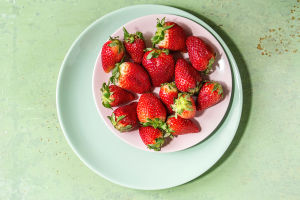The art of flower arrangement is a creative and aesthetic endeavor using cut branches, leaves, flowers, and fruits to produce beautiful and intricate artwork. It is an art form that requires a deep appreciation for the beauty of nature and the skilful manipulation of materials through techniques such as pruning, bending, and pruning.
The origin of flower arrangement can be traced back to the love of flowers by people who desired to express the beauty of nature through the medium of art. It is a way of capturing the fleeting moments of life and expressing them in a refined and artistic manner.
A formal flower arrangement is a particular type designed for specific social occasions such as weddings, funerals, and other formal events.
The purpose of such arrangements is to convey feelings of friendship, family affection, and love and express welcome, respect, celebration, sympathy, and condolences. The arrangements for such events are often simple, with a fixed style and composition.
Artistic flower arrangement, on the other hand, is a type of flower arrangement that is primarily used for aesthetic purposes, such as art appreciation and beautification of the environment. Such arrangements are not limited to any specific social function or occasion, and they are created purely for aesthetic expression.
The art of flower arrangement varies from place to place. It can be broadly classified into two primary schools of thought: the art of oriental flower arrangement and the art of western-style flower arrangement. Each of these schools has unique characteristics that distinguish it from the other.
The oriental art of flower arrangement, which is mainly represented by Japan, emphasizes the natural beauty of flowers and pays attention to graceful lines and natural gestures. The composition and layout of oriental flower arrangements are often high and low, with a rich and expressive aesthetic.
The beauty of each flower material's tone, posture, and charm is emphasized, and different compositions and combinations can produce vastly different effects, allowing for greater expressive power.
Western-style flower arrangement, which originated in Egypt and is mainly represented by some European countries, is characterized by a neat and symmetrical shape, composed primarily of geometric figures, and intense use of colour.
The flowers used in Western-style flower arrangements often have specific etiquette meanings and are usually bright and regular in shape. A large number of flowers used and rich colours create a striking visual impact.
In addition to the two primary schools of flower arrangement, there are also other regional and cultural styles of flower arrangement that are practised around the world. For example, ikebana is a traditional Japanese style of flower arrangement that emphasizes minimalism and asymmetry, emphasising the natural beauty of the materials used.
In Thailand, the art of flower arrangement is known as Phuang Malai and involves creating intricate garlands made from flowers, leaves, and other materials. These garlands are often used for special occasions such as weddings, religious ceremonies, and other celebrations.
Similarly, in India, the art of flower arrangement is known as Pushpanjali and involves the use of flowers and other natural materials to create intricate floral designs that are used in religious and cultural ceremonies.
In conclusion, a flower arrangement is a beautiful and intricate form of artistic expression that requires a deep appreciation for nature and the skilful manipulation of materials.
Through careful composition and artistic processing, the beauty and splendour of life can be captured and expressed in a refined and creative manner, whether for ceremonial or aesthetic purposes.


